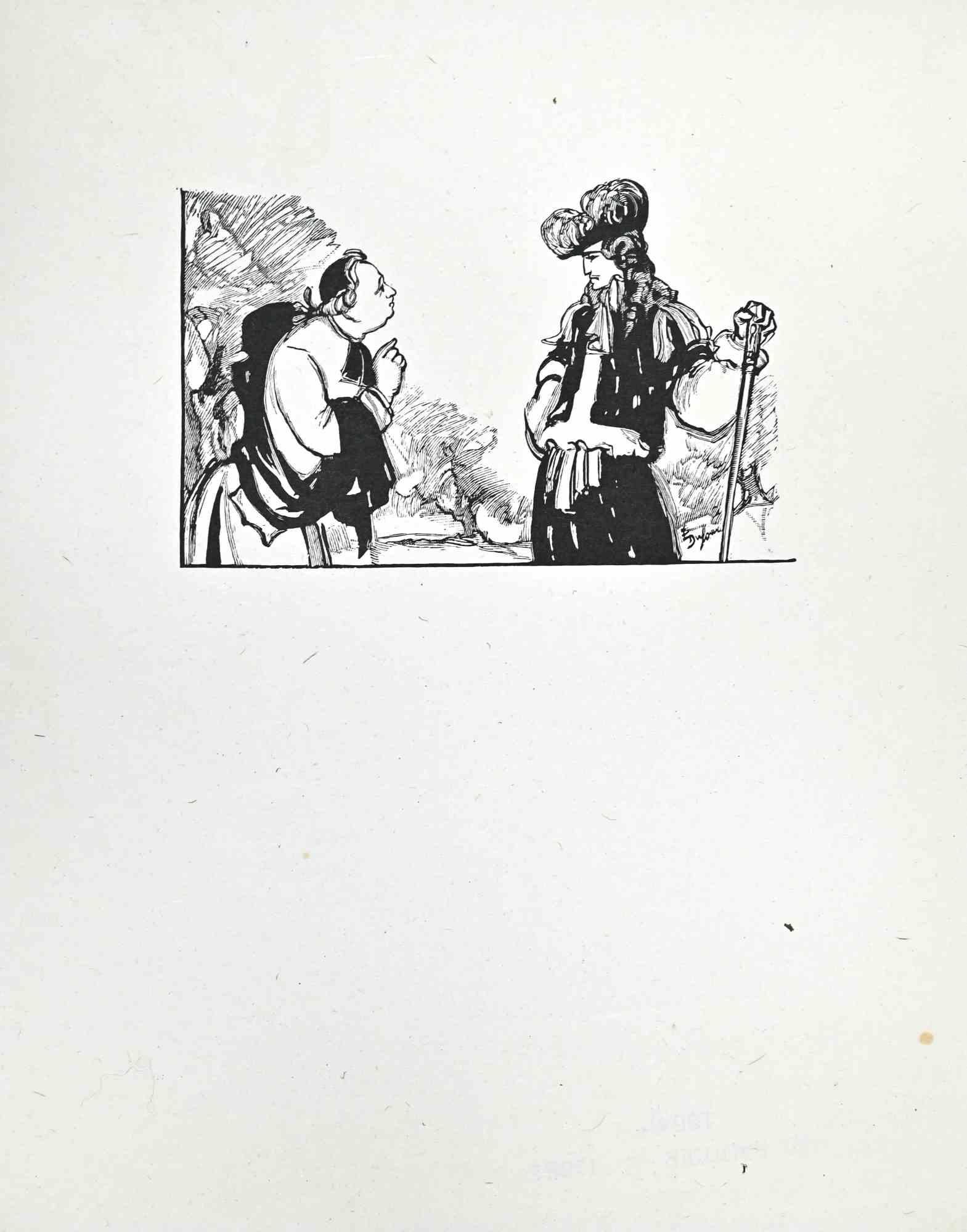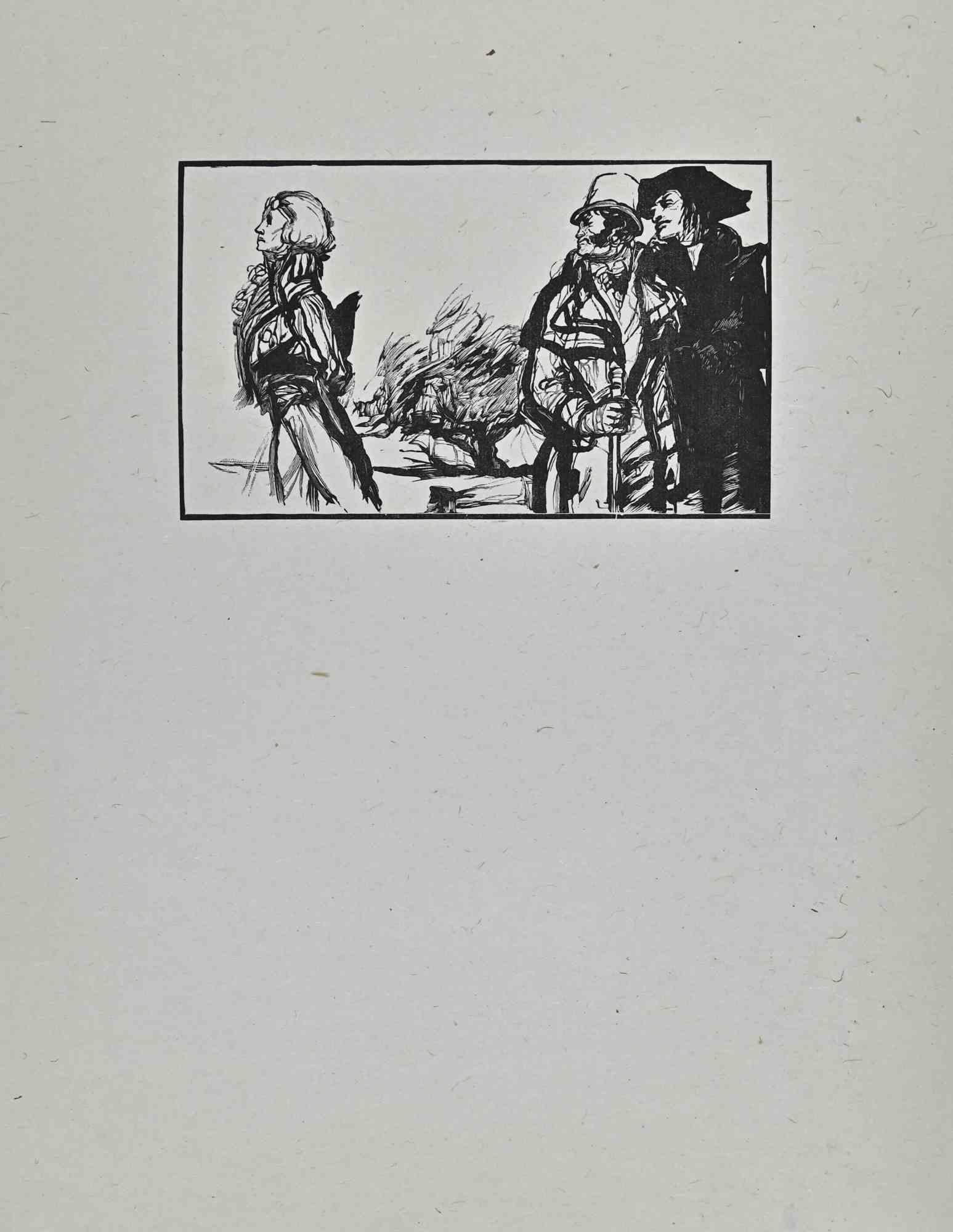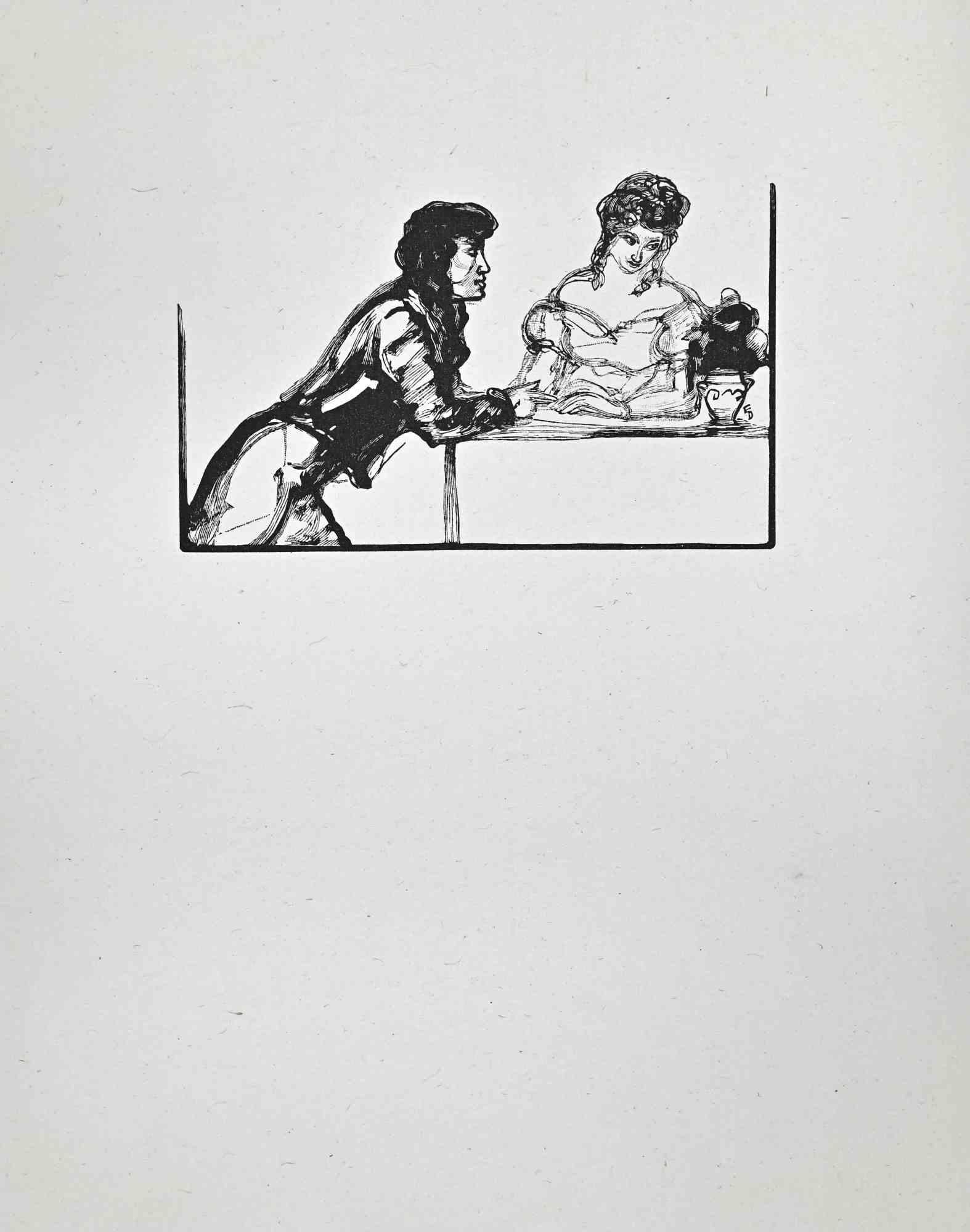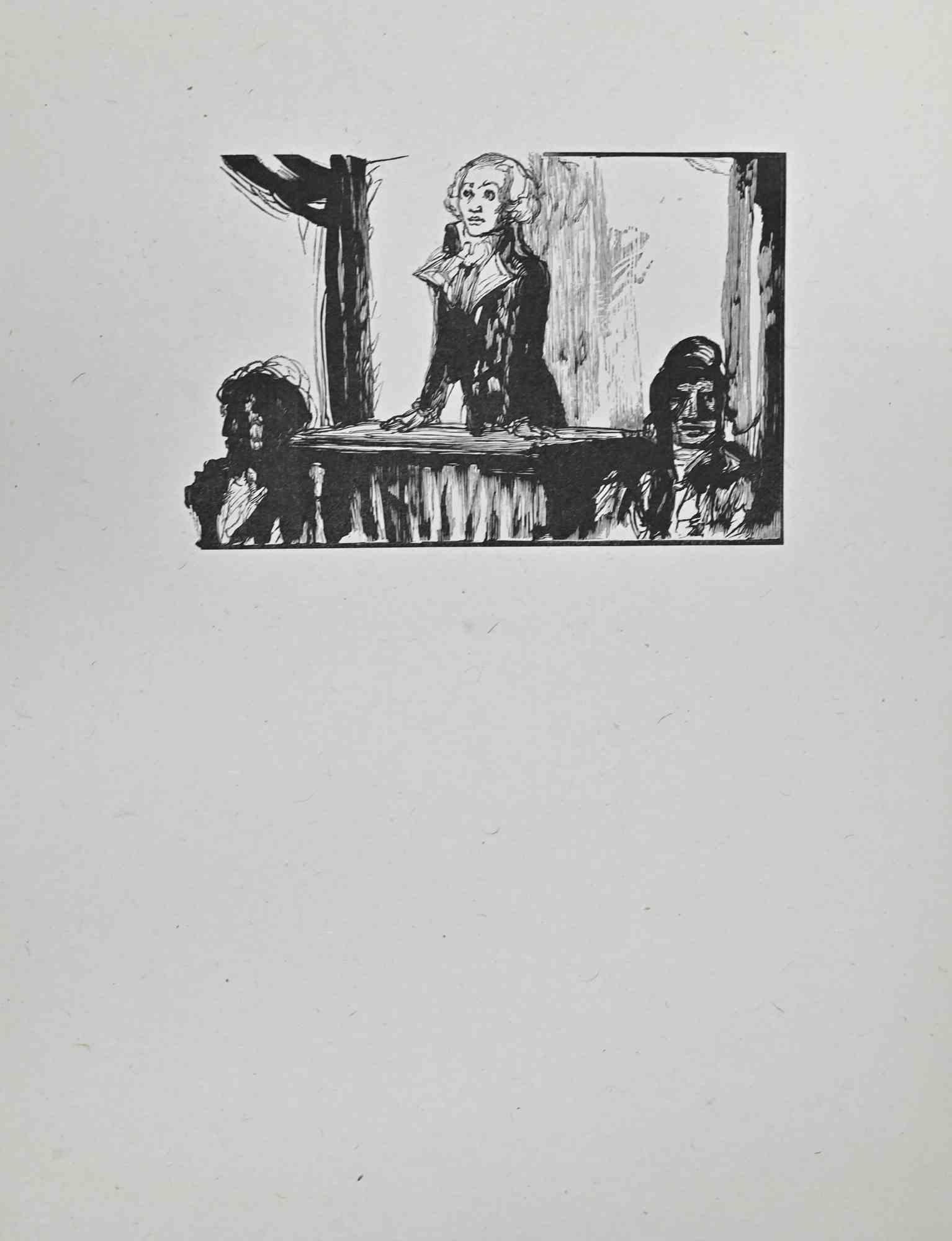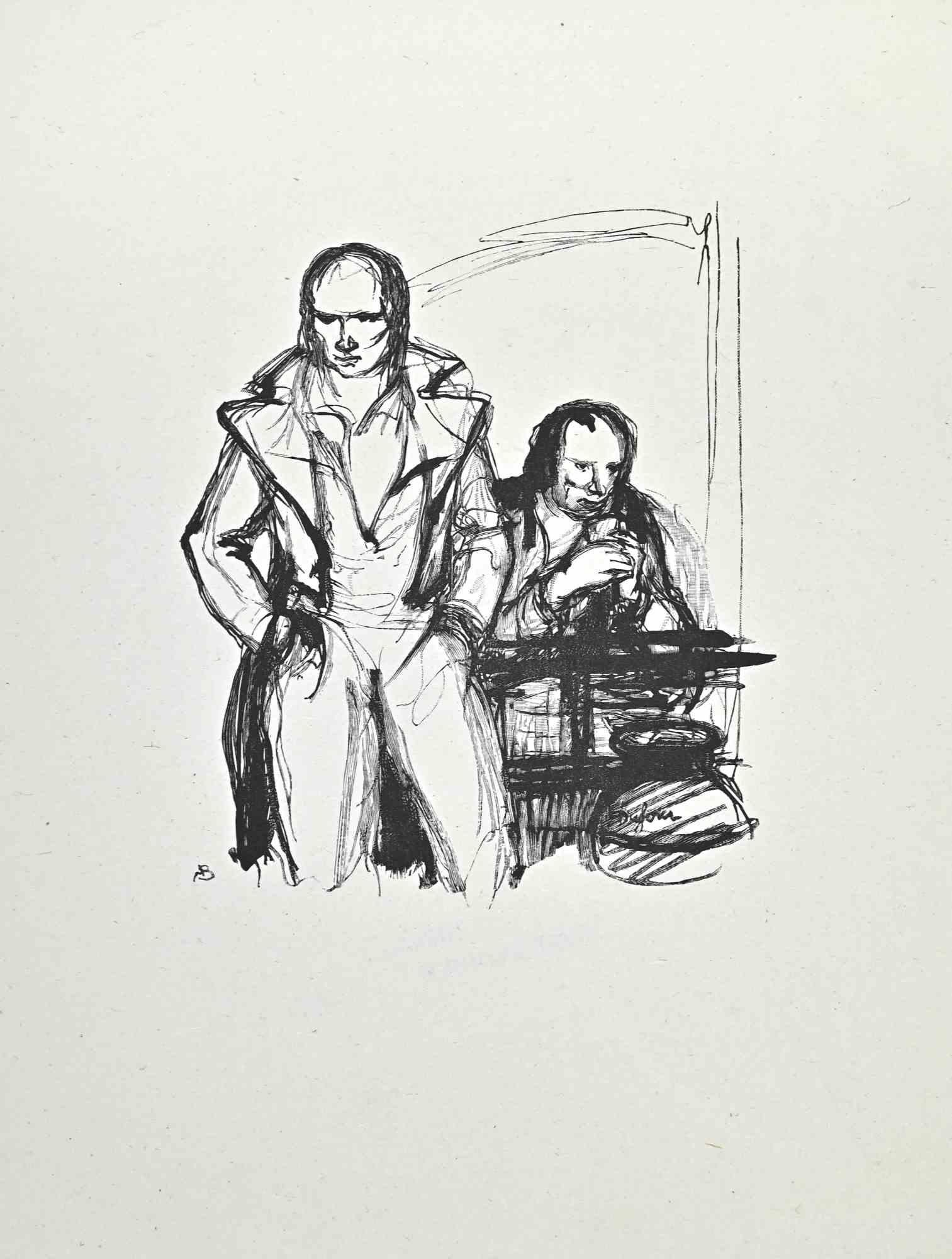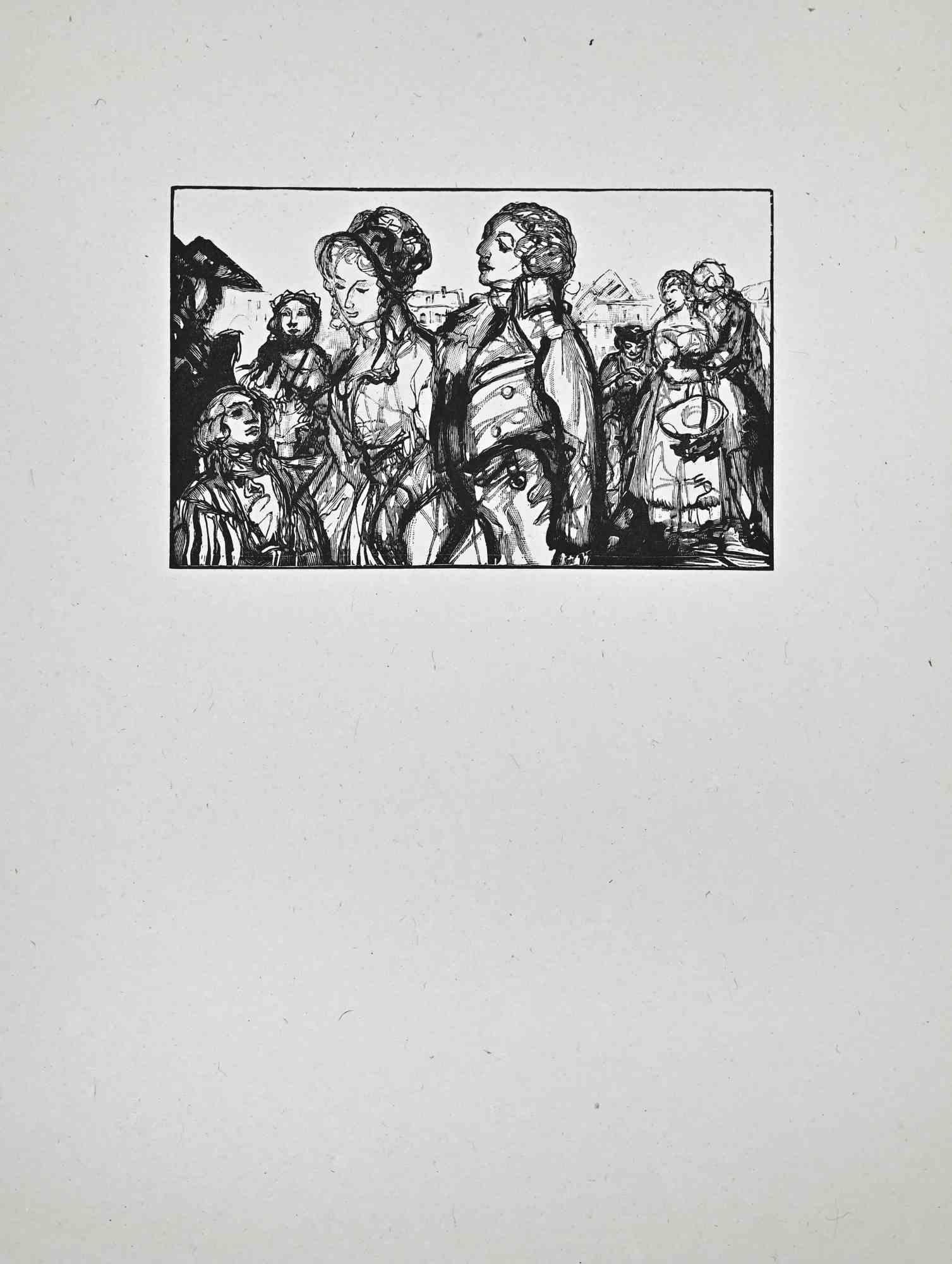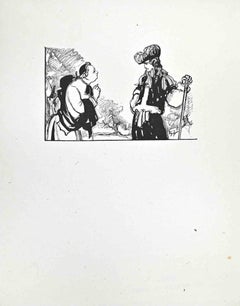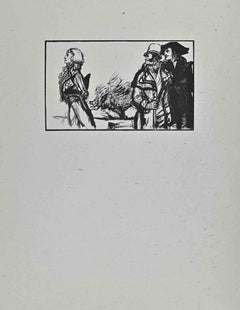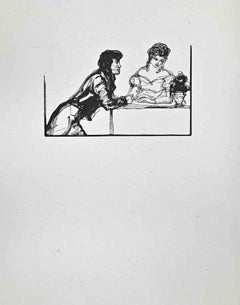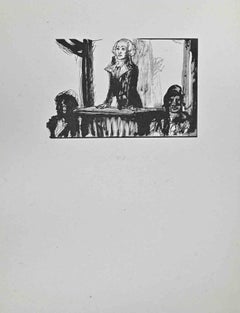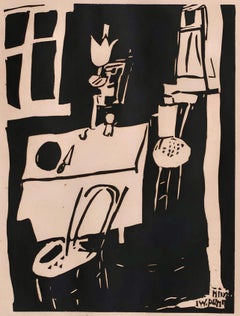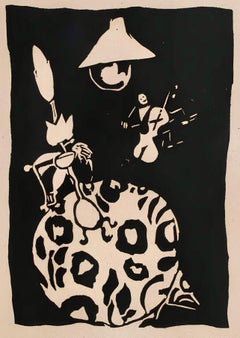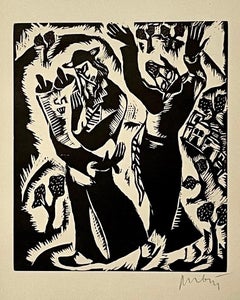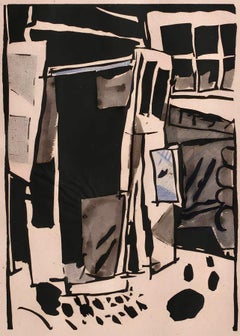Items Similar to The Salutation - Woodcut print by Paul Baudier - 1930s
Want more images or videos?
Request additional images or videos from the seller
1 of 2
Paul BaudierThe Salutation - Woodcut print by Paul Baudier - 1930s1930s
1930s
$211.50
£161.44
€180
CA$298.33
A$327.70
CHF 171.26
MX$3,908.10
NOK 2,168.60
SEK 2,020.23
DKK 1,371.95
About the Item
The Salutation is a woodcut print on ivory-colored paper realized by Paul Baudier (1881-1962) in the 1930s.
Good conditions except for diffused yellowish spots.
Paul Baudier, (born October 18, 1881 in Paris and died December 9, 1962 in Châtillon), was a French painter, engraver and illustrator. Spending his childhood in the countryside, in the Gâtinais, Paul Baudier will always be attracted by landscapes. later he apprenticed with his uncle Edmond Duplessis, who taught him the technique of wood engraving. He began by working for La Vie illustrée, then did his military service after winning the competition for the Meilleur Ouvrier de France. In 1914, he was mobilized and, at the start of the war, he was wounded and taken prisoner. After two years of captivity in Germany, he spent a year in Switzerland in Kartigen, near Thun. He paints and draws life in the prison camp, as well as landscapes that he exhibits in Geneva. He frequented the group of the Lachenal studio in Châtillon, and became friends with a large number of artists whom he met there: Sarah Bernhardt, Van Dongen, Foujita, Suzanne Tourte, Agnès de Frumerie, Georges Halbout du Tanney, Jules Rispal, Felix Fevola. He decided to settle in this city and built there, in 1927, a pavilion and a workshop rue des Egroux, today rue Guy Moquet. At the same time, he also frequented renowned engravers such as Edmond Duplessis, Albert Decaris, P.A. Bouroux, as well as writers such as Paul Valéry, Georges d'Esparbès and Jean Valmy-Baysse. His wife died in 1929, he then traveled through France to produce illustrations for Tableau de France by Jules Michelet, on behalf of the Société des bibliophiles franco-suisse.
- Creator:Paul Baudier
- Creation Year:1930s
- Dimensions:Height: 10.24 in (26 cm)Width: 7.88 in (20 cm)Depth: 0.04 in (1 mm)
- Medium:
- Movement & Style:
- Period:
- Framing:Framing Options Available
- Condition:Insurance may be requested by customers as additional service, contact us for more information.
- Gallery Location:Roma, IT
- Reference Number:Seller: T-1313591stDibs: LU650310208482
About the Seller
4.9
Platinum Seller
Premium sellers with a 4.7+ rating and 24-hour response times
1stDibs seller since 2017
7,817 sales on 1stDibs
Typical response time: 1 hour
- ShippingRetrieving quote...Shipping from: Monaco, Monaco
- Return Policy
More From This Seller
View AllThe Plea - Woodcut print by Paul Baudier - 1930s
Located in Roma, IT
The Plea is a woodcut print on ivory-colored paper realized by Paul Baudier (1881-1962) in the 1930s.
Good conditions.
Paul Baudier, (born October 18, 1...
Category
1930s Modern Figurative Prints
Materials
Woodcut
The Rival - Original Woodcut Print by Paul Baudier - 1930s
Located in Roma, IT
The Rival is an original woodcut print on ivory-colored paper realized by Paul Baudier (1881-1962) in the 1930s.
Very Good conditions.
Paul Baudier, (born October 18, 1881 in Paris...
Category
1930s Modern Figurative Prints
Materials
Woodcut
The Romance - Woodcut Print by Paul Baudier - 1930s
Located in Roma, IT
The Romance is a woodcut print on ivory-colored paper realized by Paul Baudier (1881-1962) in the 1930s.
Good conditions.
Paul Baudier, (born October 18...
Category
1930s Modern Figurative Prints
Materials
Woodcut
The Speech - Woodcut Print by Paul Baudier - 1930s
Located in Roma, IT
The Speech is a woodcut print on ivory-colored paper realized by Paul Baudier (1881-1962) in the 1930s.
Good conditions.
Paul Baudier, (born October 18,...
Category
1930s Modern Figurative Prints
Materials
Woodcut
The Manly Formality - Woodcut Print by Paul Baudier - 1930s
Located in Roma, IT
The Manly Formality is an original woodcut print on ivory-colored paper realized by Paul Baudier (1881-1962) in the 1930s.
Good conditions.
Paul Baudier, (born October 18, 1881 in ...
Category
1930s Modern Figurative Prints
Materials
Woodcut
The Nobel Holiday - Woodcut Print by Paul Baudier - 1930s
Located in Roma, IT
The Nobel Holiday is a woodcut print on ivory-colored paper realized by Paul Baudier (1881-1962) in the 1930s.
Good conditions.
Paul Baudier, (born October 18, 1881 in Paris and di...
Category
1930s Modern Figurative Prints
Materials
Woodcut
You May Also Like
Pougny, Composition, Pougny, dix linogravures originales, 1914-1920 (after)
By Jean Pougny
Located in Southampton, NY
Linocut on vélin vergé ancien paper. Unsigned and unnumbered, as issued. Good condition. Notes: From the folio, Pougny, dix linogravures originales, 1964. Published by Au Vent d'Arle...
Category
1960s Cubist Abstract Prints
Materials
Linocut
$4,076 Sale Price
20% Off
Free Shipping
Pougny, Composition, Pougny, dix linogravures originales, 1914-1920 (after)
By Jean Pougny
Located in Southampton, NY
Linocut on vélin vergé ancien paper. Unsigned and unnumbered, as issued. Good condition. Notes: From the folio, Pougny, dix linogravures originales, 1964. Published by Au Vent d'Arle...
Category
1960s Cubist Abstract Prints
Materials
Linocut
$4,076 Sale Price
20% Off
Free Shipping
Rare 1923 Cubist Reuven Rubin Woodcut Woodblock Print Israeli Hasidic Judaica
By Reuven Rubin
Located in Surfside, FL
This is from the original first edition 1923 printing. there was a much later edition done after these originals.
These are individually hand signed in pencil by artist as issued.
This listing is for the one print. the other documentation is included here for provenance and is not included in this listing.
The various images inspired by the Jewish Mysticism and rabbis and mystics of jerusalem and Kabbalah is holy, dramatic and optimistic Rubin succeeded to evoke the spirit of life in Israel in those early days.
They are done in a modern art style influenced by German Expressionism, particularly, Ernst Barlach, Ernst Ludwig Kirchner, and Franz Marc, as introduced to Israel by Jakob Steinhardt, Hermann Struck and Joseph Budko.
Reuven Rubin 1893 -1974 was a Romanian-born Israeli painter and Israel's first ambassador to Romania.
Rubin Zelicovich (later Reuven Rubin) was born in Galati to a poor Romanian Jewish Hasidic family. He was the eighth of 13 children. In 1912, he left for Ottoman-ruled Palestine to study art at Bezalel Academy of Art and Design in Jerusalem. Finding himself at odds with the artistic views of the Academy's teachers, he left for Paris, France, in 1913 to pursue his studies at the École Nationale Supérieure des Beaux-Arts. He was of the well known Jewish artists in Paris along with Marc Chagall and Chaim Soutine,
At the outbreak of World War I, he was returned to Romania, where he spent the war years.
In 1921, he traveled to the United States with his friend and fellow artist, Arthur Kolnik. In New York City, the two met artist Alfred Stieglitz, who was instrumental in organizing their first American show at the Anderson Gallery. Following the exhibition, in 1922, they both returned to Europe. In 1923, Rubin emigrated to Mandate Palestine.
Rubin met his wife, Esther, in 1928, aboard a passenger ship to Palestine on his return from a show in New York. She was a Bronx girl who had won a trip to Palestine in a Young Judaea competition. He died in 1974.
Part of the early generation of artists in Israel, Joseph Zaritsky, Arieh Lubin, Reuven Rubin, Sionah Tagger, Pinchas Litvinovsky, Mordecai Ardon, Yitzhak Katz, and Baruch Agadati; These painters depicted the country’s landscapes in the 1920s rebelled against the Bezalel school of Boris Schatz. They sought current styles in Europe that would help portray their own country’s landscape, in keeping with the spirit of the time. Rubin’s Cezannesque landscapes from the 1920s were defined by both a modern and a naive style, portraying the landscape and inhabitants of Israel in a sensitive fashion. His landscape paintings in particular paid special detail to a spiritual, translucent light. His early work bore the influences of Futurism, Vorticism, Cubism and Surrealism.
In Palestine, he became one of the founders of the new Eretz-Yisrael style. Recurring themes in his work were the bible, the prophet, the biblical landscape, folklore and folk art, people, including Yemenite, Hasidic Jews and Arabs. Many of his paintings are sun-bathed depictions of Jerusalem and the Galilee. Rubin might have been influenced by the work of Henri Rousseau whose naice style combined with Eastern nuances, as well as with the neo-Byzantine art to which Rubin had been exposed in his native Romania. In accordance with his integrative style, he signed his works with his first name in Hebrew and his surname in Roman letters.
In 1924, he was the first artist to hold a solo exhibition at the Tower of David, in Jerusalem (later exhibited in Tel Aviv at Gymnasia Herzliya). That year he was elected chairman of the Association of Painters and Sculptors of Palestine. From the 1930s onwards, Rubin designed backdrops for Habima Theater, the Ohel Theater and other theaters.
His biography, published in 1969, is titled My Life - My Art. He died in Tel Aviv in October 1974, after having bequeathed his home on 14 Bialik Street and a core collection of his paintings to the city of Tel Aviv. The Rubin Museum opened in 1983. The director and curator of the museum is his daughter-in-law, Carmela Rubin. Rubin's paintings are now increasingly sought after. At a Sotheby's auction in New York in 2007, his work accounted for six of the ten top lots. Along with Yaacov Agam and Menashe Kadishman he is among Israel's best known artists internationally. Education
1912 Bezalel Academy of Arts and Design, Jerusalem
1913-14 École des Beaux Arts, Paris and Académie Colarossi, Paris
Select Group Exhibitions
Eged - Palestine Painters Group Eged - Palestine Painters Group, Allenby Street, Tel Aviv 1929
Artists: Chana Orloff, Abraham Melnikoff, Rubin, Reuven Nahum Gutman, Sionah Tagger,Arieh Allweil,
Jewish Artists Association, Levant Fair, Tel Aviv, 1929
Artists: Ludwig Blum,Eliyahu Sigad, Shmuel Ovadyahu, Itzhak Frenel Frenkel,Ozer Shabat, Menahem Shemi...
Category
1920s Abstract Figurative Prints
Materials
Woodcut
Pougny, Composition, Pougny, dix linogravures originales, 1914-1920 (after)
By Jean Pougny
Located in Southampton, NY
Linocut on vélin vergé ancien paper. Unsigned and unnumbered, as issued. Good condition. Notes: From the folio, Pougny, dix linogravures originales, 1964. Published by Au Vent d'Arle...
Category
1960s Cubist Abstract Prints
Materials
Linocut
$4,076 Sale Price
20% Off
Free Shipping
British Art Deco woodcut by early 20th Century artist Edward Gordon Craig
Located in Petworth, West Sussex
Edward Henry Gordon Craig (British, 1872-1966)
La Procession Nocturne (state 1)
Woodcut
Inscribed `State 1 only 8 copies’ (lower left under mount)
5.1/8 ...
Category
20th Century Art Deco Figurative Prints
Materials
Woodcut
Homage to Gene Debs, Woodcut Print on Rice Paper by Leonard Baskin
By Leonard Baskin
Located in Long Island City, NY
This woodcut print was created by American artist Leonard Baskin. Baskin is well known for his somewhat grotesque, intricate, surreal drawings and natural subject matter. This print ...
Category
1940s Surrealist Portrait Prints
Materials
Rice Paper, Woodcut
More Ways To Browse
Henry Moore Signed
King Lear
Leroy Neiman Serigraph Signed And Numbered
Olympic 1976
Pedro Friedeberg Screen
Picasso Vollard Suite
Salvador Dali Signed Prints Horse
Superman Print
Three Graces Print
Tissot Etching
Vintage Guardian Angels
Vintage Skates
Vintage Sunflower Prints
Andre Dignimont
Basquiat 1983
Drunk Art
Edgar Degas Etching
Elvis Costello
